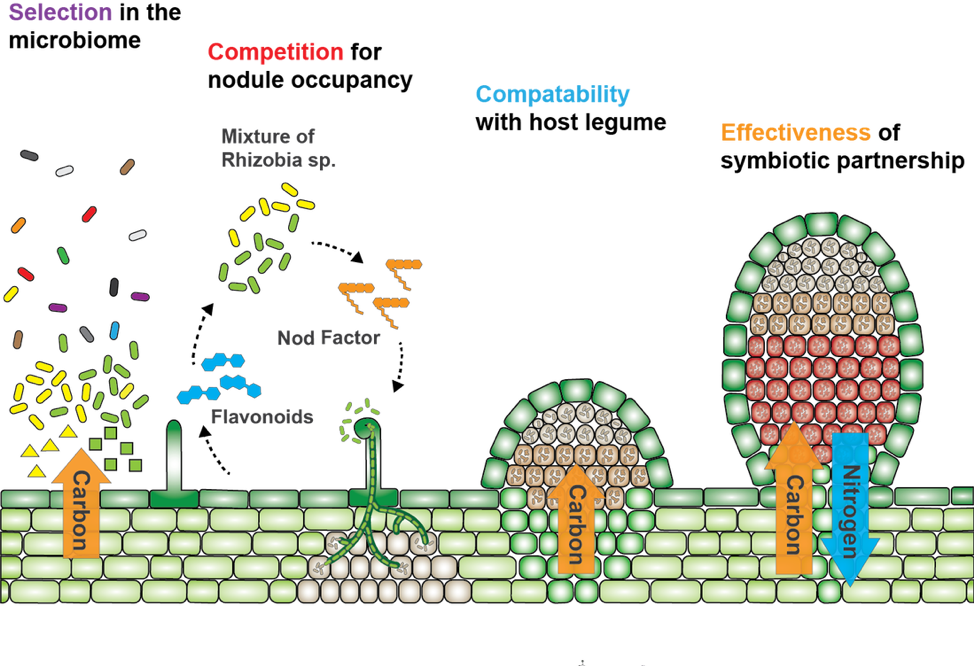Evaluating rhizobium populations in field soil
Successful nodulation of soybean plants by rhizobia from the soil is important to maximize yield and alleviate the requirement for nitrogen fertilizer. It is important to introduce rhizobia into fields by inoculation during planting when legumes are grown for the first time. Inoculation in subsequent years (at least 5 after initial inoculation) is generally not required for soybeans in eastern North Dakota. However challenging soil conditions (acidic pH, salinity) or weather conditions (drought, flooding) may affect inoculant survival in the soil and benefits in subsequent years. We are developing tools for quantification of rhizobia populations in farmer’s fields that could help inform farmers whether or not inoculation could be beneficial.
Interested in Getting Involved?
We are looking for farmers interested in having their fields tested for rhizobia abundance in Fall 2022. Currently we are focused on soybean, pea and chickpea. fields should be planned for soybean or pulse production in 2023 and have a known production and inoculation history (last 5 years). Participation by growers from Western North Dakota where inoculant persistence in soils is less well understood is especially desired.
Participating farmers will receive a report indicating the results of the assay as well as a chemical analysis of their field soil. Select fields will also be scouted in Summer 2023 to assess soybean nodulation. There are also opportunities for longer term engagement in the project to investigate effects that agronomic practices such as crop rotation have on the beneficial microbes in their soils.
Interested farmers should reach out to Geddes by email, barney.geddes@ndsu
The Geddes lab thanks the North Dakota Soybean Council for funding this work.
